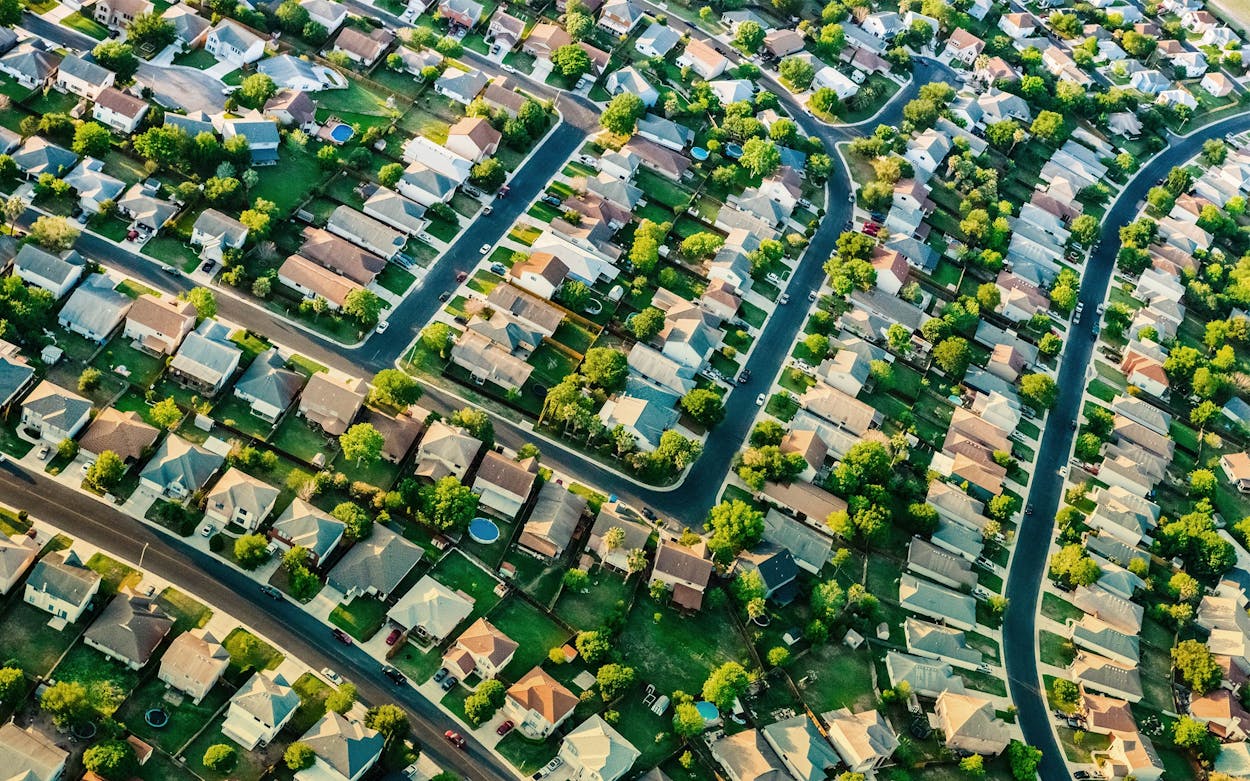There are plenty of reasons for Texas’s population boom over the past several years—the economy, immigration, Whataburger—but one that can’t be overlooked is the fact that you typically can find some space to stretch out. And thanks to a chart from real estate site Property Shark, we can see exactly how much square footage you can get in Texas, compared to the rest of the country, for $200,000.
The chart shows how much average square footage you get from a $200,000 investment in 33 U.S. cities, including the six largest in Texas—Houston, San Antonio, Dallas, Austin, Fort Worth, and El Paso. And the numbers across the state look pretty good.
Let’s start by just recapping what the study found for each city:
- El Paso: 3,334-square feet
- San Antonio: 3,249-square feet
- Fort Worth: 2,199-square feet
- Houston: 2,093-square feet
- Dallas: 1,824-square feet
- Austin: 1,341-square feet
The order of that list, from most to least amount of square footage for your money, won’t surprise anyone who follows real estate in Texas. Austin, which has a limited supply of homes but is flooded with people, is the most expensive city. El Paso and San Antonio, where that relationship tends to be flipped, are among not just the most affordable cities in Texas, but in the entire country. Houston, Dallas, and Fort Worth split the difference, finding themselves in the middle of the pack both in Texas and the U.S.
Looking at the numbers in the context of the rest of the country, though, helps explain the boom that we’ve seen throughout the state. Austin’s average of 1,341-square feet per $200,000 makes the city seem expensive and overpriced to people in parts of the state where your money goes a lot further. But it’s a downright bargain compared to cities in the northeast and the West Coast. When Austinites take the leap from renting to buying, they might notice that properties they’re interested in are swarmed with bids from California, often for more than the asking price. Why? Because 1,341-square feet is an impossible, luxurious dream to people out there. $200,000 in San Francisco gets you a measly 260-square feet, and the numbers don’t get much better throughout the rest of the state’s coast: San Jose will give you 376-square feet, San Diego 496-square feet, Los Angeles 501-square feet. If property is three to four times as expensive where you’re from, then even Austin’s relatively high property values seem like a stone-cold bargain by comparison. (Let’s not even get started on Manhattan, where $200,000 will get you 126-square feet, commonly known in Texas as a small closet.)
Extrapolating further from this data, it seems that cities where $200,000 you fetch between 1,1100–2,100-square feet are the ones experiencing the greatest population booms: According to Census data released in March, Dallas, Houston, Atlanta, and Phoenix are the metro areas with the largest gains between 2016-2017 (Orlando and Austin came in at number eight and number nine, respectively). Seattle (where you get 525-square feet for your money) and Washington, D.C. (where it’s 423-square feet) were the only cities in the top ten that offered fewer than 1,100-square feet for $200,000. (Pricing date for the other two metro areas, Tampa and the inland California city of Riverside, wasn’t available.) Other fast-growing metro areas like Charlotte, Las Vegas, and Nashville similarly fall within the same price window.
| 2017 Rank | 2016 Rank | Metropolitan Area | 2017 Population | 2016 Population | Numeric Change |
|---|---|---|---|---|---|
| 1 | 1 | Dallas-Fort Worth-Arlington, Texas | 7,399,662 | 7,253,424 | 146,238 |
| 2 | 2 | Houston-The Woodlands-Sugar Land, Texas | 6,892,427 | 6,798,010 | 94,417 |
| 3 | 3 | Atlanta-Sandy Springs-Roswell, Georgia | 5,884,736 | 5,795,723 | 89,013 |
| 4 | 4 | Phoenix-Mesa-Scottsdale, Arizona | 4,737,270 | 4,648,498 | 88,772 |
| 5 | 11 | Washington-Arlington-Alexandria, D.C.-Virginia-Maryland-West Virginia | 6,216,589 | 6,150,681 | 65,908 |
| 6 | 6 | Seattle-Tacoma-Bellevue, Washington | 3,867,046 | 3,802,660 | 64,386 |
| 7 | 13 | Riverside-San Bernardino-Ontario, California | 4,580,670 | 4,523,653 | 57,017 |
| 8 | 8 | Orlando-Kissimmee-Sanford, Florida | 2,509,831 | 2,453,333 | 56,498 |
| 9 | 9 | Austin-Round Rock, Texas | 2,115,827 | 2,060,558 | 55,269 |
| 10 | 7 | Tampa-St. Petersburg-Clearwater, Florida | 3,091,399 | 3,036,525 | 54,874 |
Low real estate prices don’t necessarily mean that a city is growing or shrinking, though. Cleveland, which gives property owners the most bang for their buck (3,769-square feet) has shrunk every year this decade. San Antonio, which places third on the list, boasted a growth of nearly 25,000 people over a twelve-month period between 2016 and 2017. El Paso, which places second, grew by only 2,780 people in that year. The sweet spot may be somewhere in the middle, in other words, but there’s not as much to learn by looking at the margins.








